Intro
Identify Failure To Thrive symptoms, including poor weight gain, delayed development, and feeding difficulties, to address growth and nutritional issues in children, promoting healthy development and thrive.
Failure to thrive (FTT) is a term used to describe a child who does not gain weight or grow at a healthy rate due to inadequate nutrition, inadequate caloric intake, or inadequate care. This condition can be caused by various factors, including medical conditions, environmental factors, and parental factors. FTT can have severe consequences on a child's physical, emotional, and cognitive development, making it essential for parents, caregivers, and healthcare professionals to recognize the symptoms and seek prompt medical attention.
FTT can be classified into two main categories: organic and non-organic. Organic FTT is caused by a underlying medical condition, such as gastrointestinal disorders, congenital heart disease, or genetic disorders. Non-organic FTT, on the other hand, is caused by environmental factors, such as poverty, neglect, or parental substance abuse. Regardless of the cause, FTT can have devastating effects on a child's overall health and well-being. Early recognition and intervention are critical to preventing long-term damage and ensuring the child receives the necessary care and support.
The symptoms of FTT can vary depending on the underlying cause, but common signs include poor weight gain, short stature, delayed development, and behavioral problems. Children with FTT may also exhibit feeding difficulties, such as refusal to eat or drink, vomiting, or diarrhea. In severe cases, FTT can lead to malnutrition, dehydration, and even organ failure. It is essential for parents and caregivers to monitor their child's growth and development closely and seek medical attention if they notice any signs of FTT.
Causes of Failure to Thrive
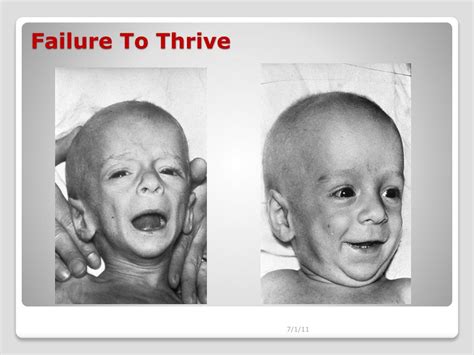
Medical Conditions
Certain medical conditions can increase a child's risk of developing FTT. These conditions can include: * Gastrointestinal disorders, such as celiac disease, Crohn's disease, or ulcerative colitis * Congenital heart disease * Genetic disorders, such as Down syndrome or Turner syndrome * Chronic infections, such as HIV or tuberculosis * Neurological disorders, such as cerebral palsy or muscular dystrophyEnvironmental Factors
Environmental factors can also contribute to FTT. These factors can include: * Poverty * Neglect * Parental substance abuse * Inadequate access to healthcare * Inadequate access to nutritious food and clean waterSymptoms of Failure to Thrive
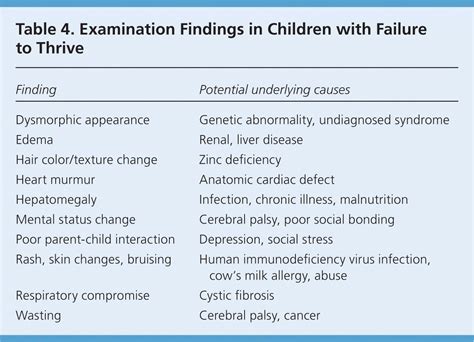
Physical Symptoms
Children with FTT may exhibit physical symptoms, such as: * Weight loss or poor weight gain * Short stature * Delayed puberty * Poor muscle tone * Weakness * FatigueBehavioral Symptoms
Children with FTT may also exhibit behavioral symptoms, such as: * Irritability * Anxiety * Depression * Attention deficit hyperactivity disorder (ADHD) * Autism spectrum disorderDiagnosis of Failure to Thrive
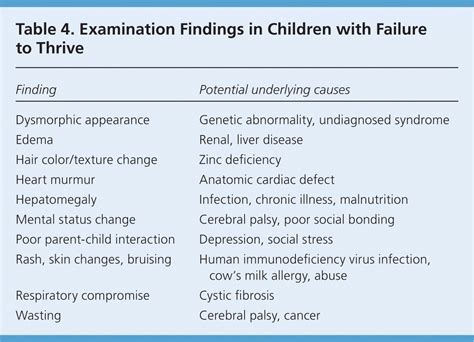
Medical History
The healthcare provider will review the child's medical history to identify any underlying medical conditions that may be contributing to FTT. This includes: * Previous illnesses or hospitalizations * Chronic medical conditions * Medications * AllergiesPhysical Examination
The healthcare provider will perform a physical examination to look for signs of malnutrition, dehydration, or organ damage. This includes: * Assessing the child's weight, height, and head circumference * Evaluating the child's muscle tone and strength * Checking for signs of dehydration, such as dry mouth, sunken eyes, or decreased urine outputTreatment of Failure to Thrive
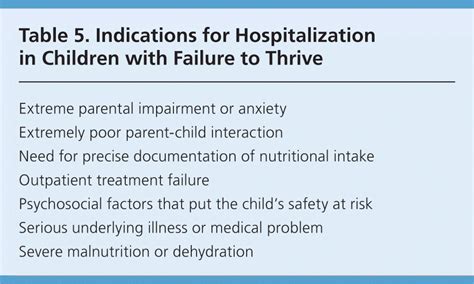
Medical Treatment
The healthcare provider may prescribe medications to treat underlying medical conditions, such as: * Antibiotics for infections * Anti-inflammatory medications for inflammatory conditions * Hormone replacement therapy for hormonal imbalancesNutritional Support
The healthcare provider may recommend dietary changes, such as: * Increasing caloric intake * Supplementing with vitamins and minerals * Providing guidance on feeding techniques and strategies to improve nutrient absorptionPrevention of Failure to Thrive
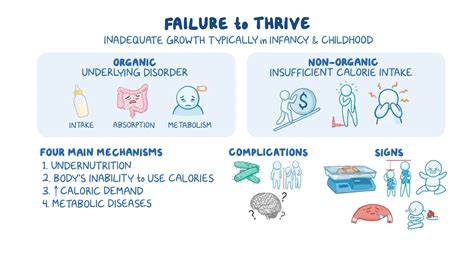
Early Intervention
Early intervention is critical to preventing long-term damage and ensuring the child receives the necessary care and support. Parents and caregivers can: * Monitor the child's growth and development closely * Seek medical attention if they notice any signs of FTT * Follow the healthcare provider's recommendations for dietary changes and medical treatmentConclusion and Next Steps
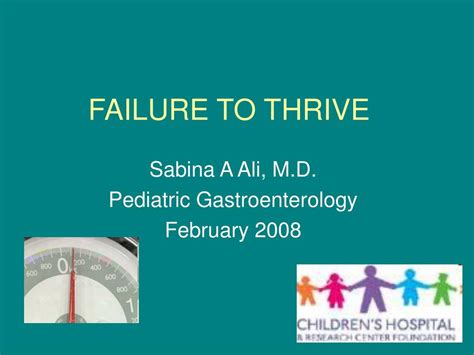
We invite you to share your thoughts and experiences with FTT in the comments below. If you have any questions or concerns, please do not hesitate to reach out to us. Together, we can work towards preventing FTT and ensuring every child receives the care and support they deserve.
What are the common causes of Failure to Thrive?
+FTT can be caused by various factors, including medical conditions, environmental factors, and parental factors. Medical conditions, such as gastrointestinal disorders, congenital heart disease, or genetic disorders, can increase a child's energy expenditure, reduce their appetite, or impair their ability to absorb nutrients. Environmental factors, such as poverty, neglect, or parental substance abuse, can also contribute to FTT by limiting access to nutritious food, clean water, and healthcare.
What are the symptoms of Failure to Thrive?
+The symptoms of FTT can vary depending on the underlying cause, but common signs include poor weight gain, short stature, delayed development, and behavioral problems. Children with FTT may also exhibit feeding difficulties, such as refusal to eat or drink, vomiting, or diarrhea. In severe cases, FTT can lead to malnutrition, dehydration, and even organ failure.
How is Failure to Thrive diagnosed?
+Diagnosing FTT involves a comprehensive evaluation of the child's medical history, physical examination, and laboratory tests. The healthcare provider will review the child's growth charts to assess their weight, height, and head circumference, perform a physical examination to look for signs of malnutrition, dehydration, or organ damage, and order laboratory tests, such as complete blood count, electrolyte panel, and liver function tests.
